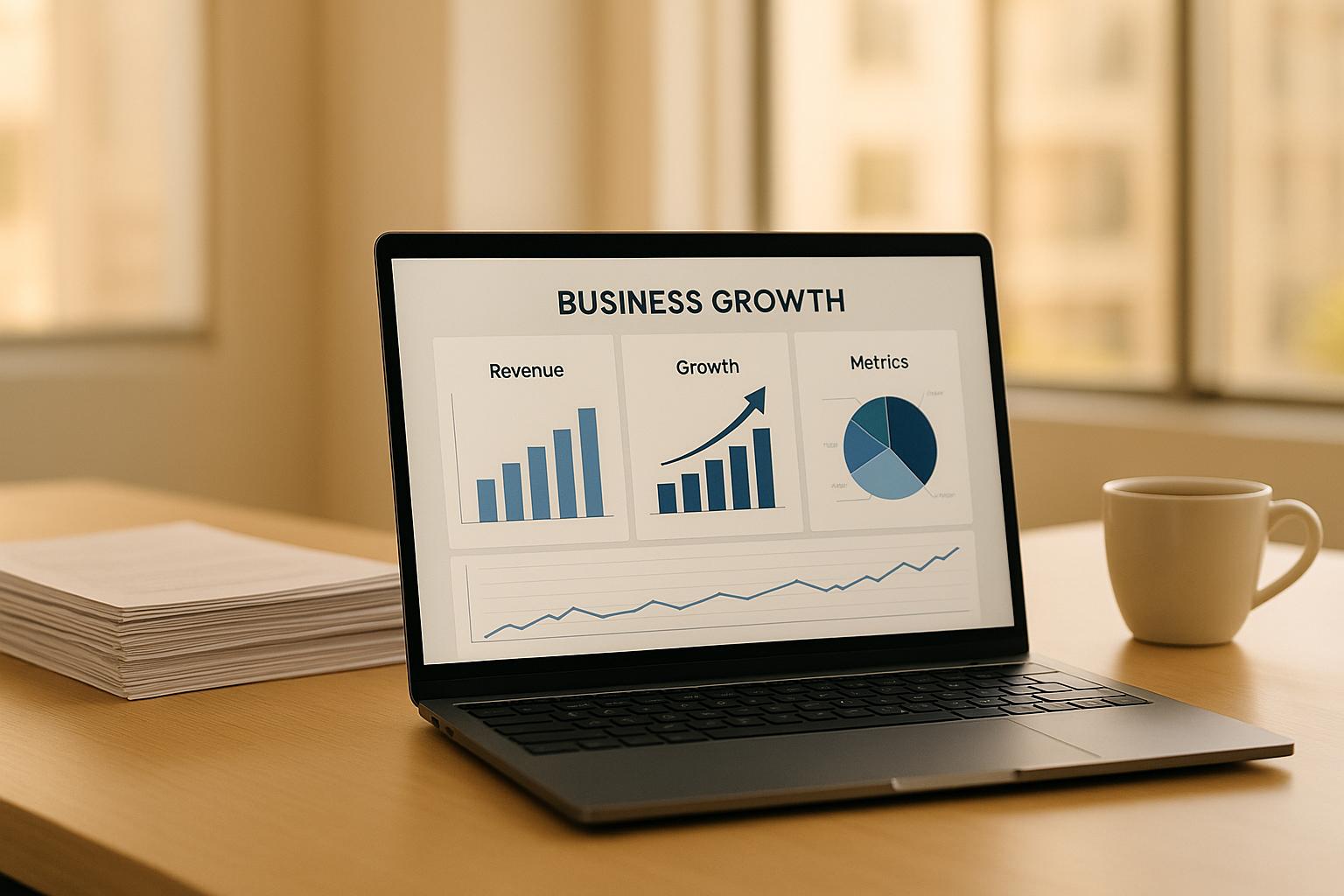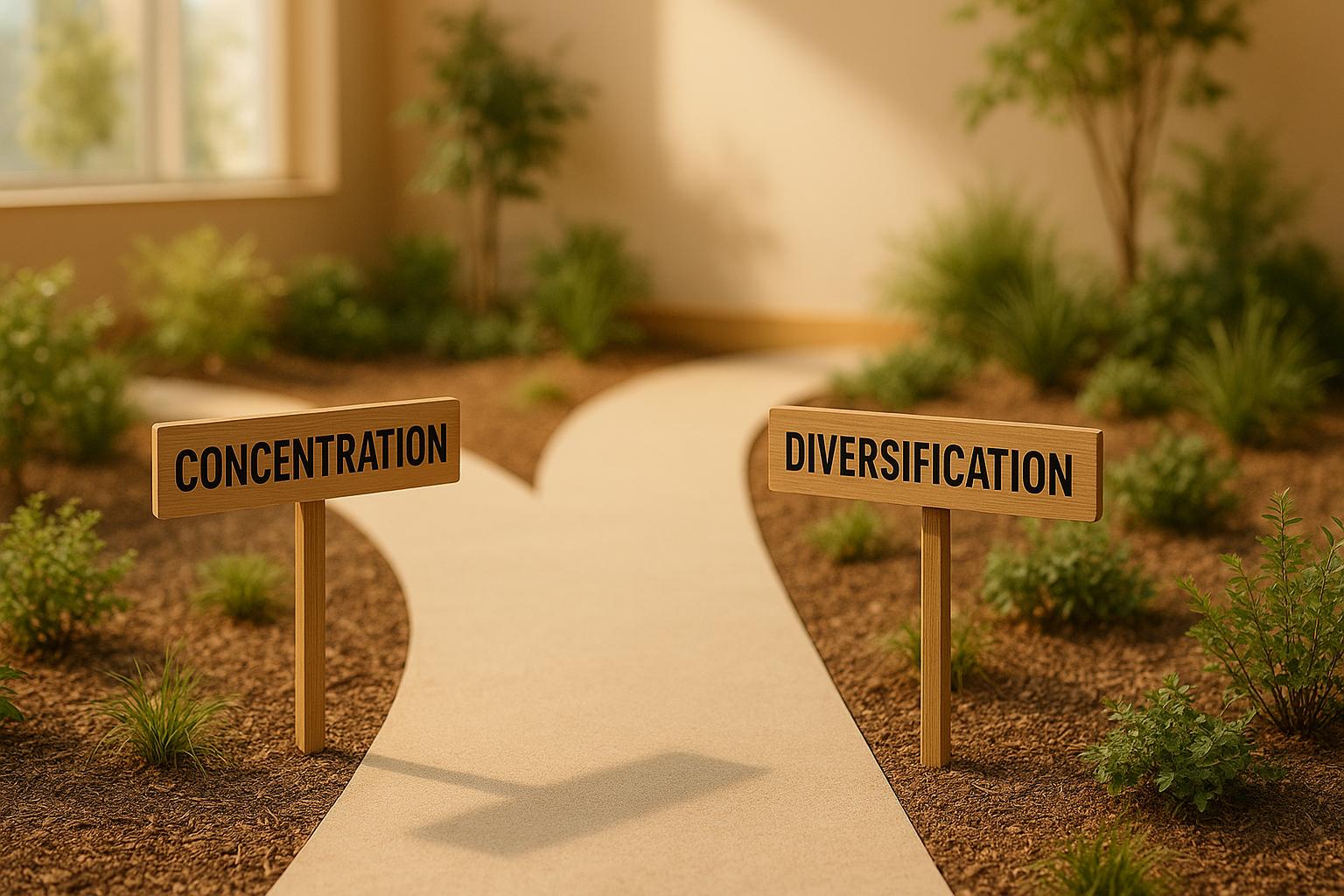How to Scale vs Grow Your Business: Metrics & Levers

For many business owners, the concepts of "growth" and "scale" are often used interchangeably. However, as today’s expert discussion reveals, these terms represent two distinct approaches, each with its own metrics, strategies, and implications for profitability and efficiency. Whether you're operating a $500,000 startup or a $10 million enterprise, understanding the difference between growth and scale is crucial for achieving sustainable success.
This article is based on key insights shared in a dialogue between an experienced business consultant and a podcast host, highlighting the mindset, numbers, and strategies needed to propel your business forward while maintaining a strong foundation.
Growth vs. Scale: What’s the Difference?
Let’s break down the difference between growing your business and scaling it, as defined by today’s expert:
- Growth: When a business grows, its costs rise in direct proportion to revenue. For example, if revenue increases by $1 million, operational costs also increase proportionately. Growth typically focuses on expanding operations, hiring more staff, or adding resources to match the growing demands of the business. However, profit margins often remain flat during this phase.
- Scale: Scaling, on the other hand, is about leveraging efficiencies to increase revenue while minimizing the rise in costs. A scaled business generates higher profits as revenue grows because it focuses on automation, delegation, and systems that don’t depend on constant resource expansion or owner involvement.
Why Scaling Offers Long-term Benefits
The main advantage of scaling is improved profitability. Businesses that scale effectively create systems where revenue outpaces costs, leading to better margins and a healthier bottom line. Scaling also makes businesses less reliant on their owners, which is a significant factor when it comes to valuation and the potential for an eventual exit.
The Foundation of Business Success: Know Your Numbers
One of the resounding themes shared in the discussion is this: Your business, your numbers, your responsibility. Whether you’re looking to grow or scale, understanding your financial metrics is non-negotiable. Start by analyzing the following numbers:
Key Metrics to Monitor
- Average Customer Spend: How much does a customer typically spend on your products or services?
- Customer Lifetime Value (CLV): What is the total revenue you can expect from a customer over their lifetime?
- Customer Acquisition Cost (CAC): How much does it cost to bring in new customers?
- Profit Margins: Are your margins improving or staying flat as your business grows?
- Customer Segments: Understand which customers or sectors contribute the most to your revenue. For example, 80% of your revenue may come from just 20% of your customers.
- Revenue by Product/Service: Identify which offerings are driving the majority of your income and which are underperforming.
By breaking down your revenue streams and customer behavior, you can uncover opportunities to cross-sell, up-sell, or even develop new products to meet untapped demand.
Three Key Growth and Scaling Levers
When planning to move from $3 million to $6 million or beyond, you need to focus on the following levers:
1. Market Penetration
Encourage existing customers to buy more of your products or services. For example:
- If customers purchase Product A, explore why they aren’t buying Product B.
- Often, the issue isn’t the product itself but a lack of awareness or understanding.
2. Product Development
Expanding your product line can help you meet more customer needs. Key questions include:
- Is there a complementary product or service you could offer to your existing customer base?
- What would be the cost to develop or introduce this offering, and how does it align with your existing margins?
3. Finding New Customers
This is often the most challenging lever to pull, as acquiring new customers can be resource-intensive. To improve efficiency:
- Leverage data to identify high-value customer profiles.
- Use targeted marketing strategies rather than relying solely on social media or broad campaigns.
Building Value: The Role of Risk and Independence
When it comes to valuing your business, several factors influence its worth. The expert highlighted these key elements:
1. Risk Management
Potential buyers will evaluate the risks associated with your business, including:
- Customer Reliance: Are your revenues heavily dependent on a few key clients?
- Supplier Dependence: Could losing a supplier disrupt your operations?
- Owner Dependence: Does the business rely heavily on you as the owner? A business that functions independently of its owner is more valuable.
2. Cash Flow
A profitable business can still fail if it doesn’t manage cash flow properly. Buyers will look at:
- Whether your business generates excess cash.
- How you handle debt and funding.
3. Growth Strategy
Your business’s value is not just based on its current performance but also its future potential. Buyers need to see a clear, data-driven growth plan backed by realistic assumptions.
Leveraging Efficiency and Technology
Scaling isn’t just about doing more - it’s about doing more with less. Key strategies include:
- Automation: Invest in systems that reduce manual labor and errors.
- Delegation: Empower your team to handle operations, freeing you up to focus on strategy.
- Tech Tools: Use technology to streamline processes such as inventory management, customer relationship management (CRM), and financial forecasting.
Key Takeaways
Here are the most actionable insights from this discussion:
- Understand the difference: Growth increases revenue and costs proportionally, while scaling focuses on increasing revenue without equivalent cost hikes.
- Start with your numbers: Analyze average customer spend, CLV, CAC, and profit margins to identify areas for improvement.
- Leverage key growth strategies:
- Expand product offerings to existing customers.
- Develop new services/products that align with customer needs.
- Target new, high-value customer segments.
- Mitigate risk: Reduce reliance on key customers, suppliers, or the owner to build a more resilient business.
- Plan for cash flow: Ensure you have sufficient runway and use debt strategically to fuel growth.
- Focus on efficiency: Automate, delegate, and implement systems that reduce costs and improve output.
- Think long-term: Start planning your exit strategy early by building systems and processes that make your business attractive to buyers.
Final Thoughts: Scaling Excellence vs. Mediocrity
Scaling your business is not just about ambition - it’s about discipline, strategy, and execution. By focusing on foundational metrics, reducing risks, and building scalable systems, you can position your business for exponential growth and long-term success.
The road to scaling isn’t easy, but as highlighted in this discussion, the journey is transformative. Embrace the numbers, align with the right mentors, and always keep an eye on the bigger picture. Remember, "Excellence is a choice."
Source: "What's the Difference between Scaling and Growing your business?" - The Mind Management Mentors Podcast, YouTube, Sep 13, 2025 - https://www.youtube.com/watch?v=GsfWh7UXV8Y
Use: Embedded for reference. Brief quotes used for commentary/review.




